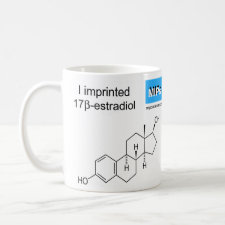
Authors: Sanbe H, Haginaka J
Article Title: Uniformly sized molecularly imprinted polymers for bisphenol A and b-estradiol: retention and molecular recognition properties in hydro-organic mobile phases.
Publication date: 2003
Journal: Journal of Pharmaceutical and Biomedical Analysis
Volume: 30
Issue: (6)
Page numbers: 1835-1844.
DOI: 10.1016/S0731-7085(02)00526-5
Abstract: Uniformly sized molecularly imprinted polymers (MIPs) for bisphenol A (BPA) have been prepared using ethylene glycol dimethacrylate (EDMA) as a cross-linker and methacrylic acid, 2-diethylaminoethyl methacrylate or 4-vinylpyridine (4-VPY) as a functional monomer or without use of a functional monomer. The MIPs obtained for BPA were evaluated using a mixture of phosphate buffer (or water) and acetonitrile or only acetonitrile as the mobile phase. Among the MIPs prepared, that using 4-VPY showed the highest retentivity and selectivity for BPA. The highest selectivity factor, which is defined as the ratio of the retention factors (k) on the molecularly imprinted and non-imprinted polymers k(imprinted)/k(non-imprinted), was 9.4 for BRA on the BPA-imprinted 4-VPY-co-EDMA polymers, while that for P-estradiol on the P-estradiol-imprinted 4-VPY-co-EDMA polymers was 2.4. The differences in the selectivity factors between BPA and beta-estradiol on the respective MIPs could be ascribable to differences in the number of interaction sites. It is plausible that the phenol groups of BRA could interact with two pyridyl groups of the MIP by hydrogen bonding interactions, while there is only one such site for beta- estradiol. Furthermore, the results suggest that hydrophobic and hydrogen bonding interactions can play an important role in the retention and recognition of BPA and beta-estradiol in the hydro-organic mobile phase, while hydrogen bonding interactions seem to be useful for the retention and recognition when acetonitrile is used as the mobile phase. (C) 2002 Elsevier Science B.V. All rights reserved



Join the Society for Molecular Imprinting

New items RSS feed
Sign-up for e-mail updates:
Choose between receiving an occasional newsletter or more frequent e-mail alerts.
Click here to go to the sign-up page.
Is your name elemental or peptidic? Enter your name and find out by clicking either of the buttons below!
Other products you may like:
 MIPdatabase
MIPdatabase









